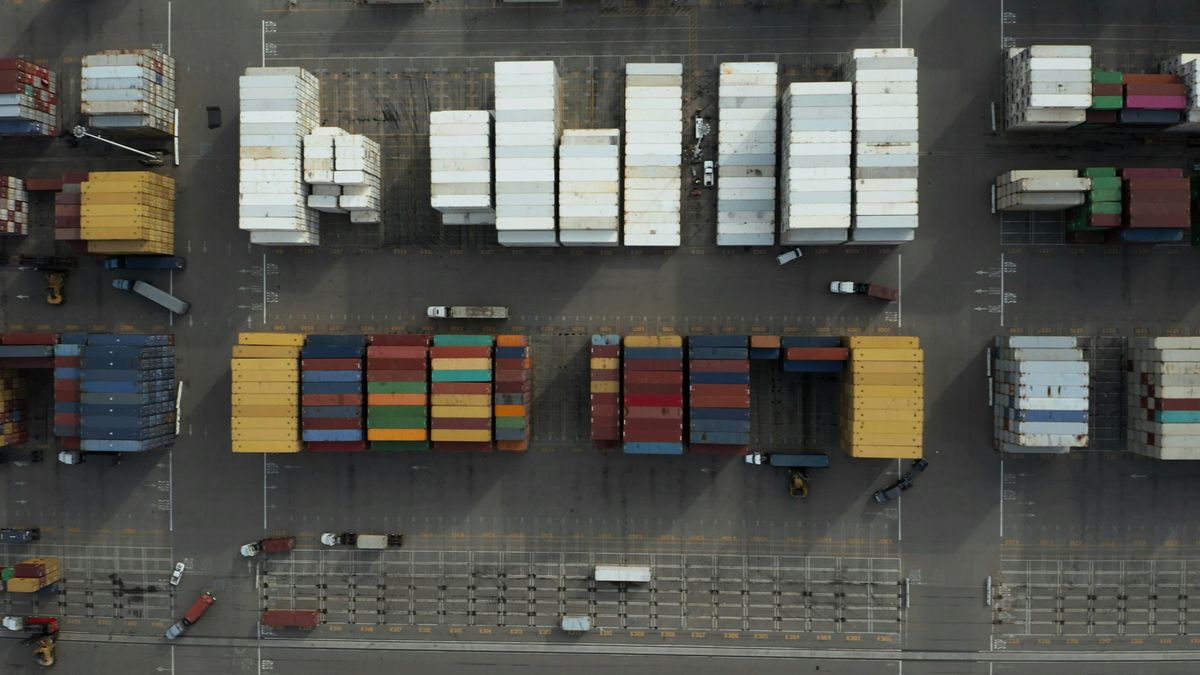Dealing with late payments can be a significant challenge for businesses exporting electronics to Brazil. Understanding the legal framework, implementing preventative strategies, and knowing how to navigate the collection process are crucial for maintaining financial stability and ensuring that transactions are concluded successfully. This article delves into the intricacies of managing late payments in the context of Brazilian electronics exports, providing insights into legal considerations, prevention tactics, collection methods, and financial implications.
Key Takeaways
- Comprehend Brazil’s import regulations and ensure contractual terms are clear to minimize payment delays.
- Prevent late payments by conducting thorough debtor investigations and establishing a structured credit policy.
- Utilize a multi-phase recovery system, including skip-tracing, attorney letters, and persistent communication.
- Assess the cost-benefit of litigation, considering upfront legal costs against the potential for debt recovery.
- Explore alternative dispute resolution methods and employ effective negotiation tactics before escalating to litigation.
Understanding the Legal Framework for Electronics Exports to Brazil
Brazilian Import Regulations and Compliance
Navigating Brazil’s import regulations is crucial for timely payments. Compliance is key to avoiding delays that can lead to late payments. Ensure your electronics exports meet Brazilian standards:
- Anatel certification for telecommunications products
- Inmetro certification for electrical safety
- Compliance with Brazilian environmental regulations
Non-compliance can result in goods being held at customs, causing significant payment setbacks.
Understand the import tax structure and prepare for associated costs. Brazil’s complex tax system can impact the final cost for the buyer, influencing payment timelines. Stay informed and proactive to mitigate risks of late payments.
Contractual Obligations and Payment Terms
Crafting airtight contracts is crucial for securing timely payments. Clearly defined payment terms are the bedrock of successful transactions. Ensure that your contracts with Brazilian importers include specific clauses on payment deadlines, late payment penalties, and dispute resolution mechanisms.
Payment terms should be aligned with industry standards yet tailored to mitigate risks. Consider the following points:
- Payment deadlines and milestones
- Interest rates on late payments
- Methods of payment accepted
- Currency exchange provisions
It’s essential to balance firmness with flexibility. Be prepared to negotiate terms while safeguarding your financial interests.
Remember, a well-structured contract is your first line of defense against late payments. It sets clear expectations and provides a legal basis for enforcement should disputes arise.
International Trade Agreements and Their Impact
The legal framework for electronics exports to Brazil is not just about local laws. International trade agreements, such as the United Nations Convention on Contracts for the International Sale of Goods (CISG), play a pivotal role. Understanding these agreements is crucial for ensuring compliance and avoiding payment delays.
When exporting to Brazil, it’s essential to be aware of the CISG’s influence on contract formation and dispute resolution. This knowledge can be a powerful tool in credit management and in devising proactive legal strategies. Moreover, exporters must navigate the complex web of import regulations and Export Administration Regulations (EAR) compliance.
To mitigate the risk of late payments, exporters should integrate international trade norms into their transactional planning and contract negotiations.
Remember, while international agreements facilitate trade, they also require a thorough understanding to leverage their benefits fully. Stay informed and prepared to protect your interests in the dynamic landscape of global trade.
Strategies for Preventing Late Payments
Conducting Thorough Debtor Investigations
Before initiating collection efforts, a meticulous investigation of the debtor’s financial status is crucial. Assessing the debtor’s ability to pay is the first step in determining the appropriate course of action. If the likelihood of recovery is low, it may be advisable to close the case, avoiding unnecessary expenses.
Skip-tracing and gathering contact information form the backbone of this phase. Daily attempts to reach a resolution through various communication channels are standard practice during the initial 30 to 60 days. Should these efforts fail, the case escalates to involve legal counsel.
The decision to litigate hinges on the investigation’s outcome. Upfront legal costs, typically between $600 to $700, must be considered. However, if litigation does not result in recovery, no additional fees are owed.
The table below outlines the collection rates based on the age and number of claims:
| Claims Submitted | Accounts < 1 Year | Accounts > 1 Year | Accounts < $1000 | Attorney Involvement |
|---|---|---|---|---|
| 1-9 | 30% | 40% | 50% | 50% |
| 10+ | 27% | 35% | 40% | 50% |
These rates are tailored to the specifics of each case, ensuring a competitive edge in the recovery process.
Implementing a Structured Credit Policy
A structured credit policy is essential for mitigating risks associated with late payments. Clearly define payment terms and conditions to ensure mutual understanding. Establish credit limits based on customer creditworthiness and past payment behavior.
Credit assessment procedures should be rigorous, involving financial analysis and debtor investigations. This approach aligns with strategies for resolving payment delays and approaching delinquent accounts to improve cash flow and debt recovery.
- Evaluate customer credit history
- Set clear credit limits
- Define strict payment terms
- Monitor account activity regularly
Consistency in policy enforcement is key to maintaining financial stability and customer accountability.
Regular reviews of the credit policy ensure it adapts to changing market conditions and customer profiles. Stay proactive to minimize the impact of late payments on your business operations in Brazil.
Utilizing Proactive Communication and Follow-Ups
Effective communication is the linchpin of timely payments. Stay ahead of the curve by initiating contact before invoices are due. Regular, structured follow-ups can significantly reduce the incidence of late payments.
Consistency is key. Establish a routine for reaching out to Brazilian importers, ensuring they are aware of payment schedules and any potential issues are addressed promptly.
- Send reminders a week before the due date.
- Follow up immediately on missed deadlines.
- Maintain a polite yet firm tone in all communications.
Proactive engagement demonstrates your commitment to the business relationship and can often preempt payment delays.
By keeping the lines of communication open, you not only foster a positive business relationship but also create an environment where late payments are less likely. Remember, securing payments from Brazilian importers requires a comprehensive approach that includes understanding legal frameworks, financial viability, and effective debt recovery strategies.
Navigating the Collection Process
Initial Debt Recovery Efforts and Skip-Tracing
When exporting electronics to Brazil, initial debt recovery efforts are critical. The process begins swiftly, with actions taken within 24 hours of identifying a delinquent account. This phase includes sending demand letters and employing skip-tracing techniques to locate the debtor and assess their financial status.
- The first contact is made through a series of letters and direct communication attempts, including phone calls and emails.
- Daily attempts to engage with the debtor are made, aiming for a resolution within the first 30 to 60 days.
If these efforts do not yield results, the case escalates to a more formal and legal approach. At this juncture, the decision to pursue legal action is considered, weighing the potential for recovery against the costs involved. A structured approach ensures that every step, from initial contact to potential litigation, is handled with precision and legal compliance.
The choice between continuing standard collection activities or proceeding with legal action hinges on a detailed analysis of the debtor’s assets and the likelihood of recovery.
Understanding the financial implications and the collection rates is essential for making informed decisions. The table below outlines the collection rates based on the age and amount of the claim, as well as the number of claims submitted:
| Claims Submitted | Accounts < 1 Year | Accounts > 1 Year | Accounts < $1000 | Attorney Placed Claims |
|---|---|---|---|---|
| 1-9 | 30% | 40% | 50% | 50% |
| 10+ | 27% | 35% | 40% | 50% |
Legal recourse for unpaid debts in Brazil involves initiating formal demand, filing a lawsuit, and assessing the debtor’s ability to pay. Prevention strategies and understanding the legal framework are crucial for securing payments.
Engaging with Collection Agencies and Their Rates
When the initial efforts to recover debts in Brazil falter, engaging with collection agencies becomes a pivotal step. Choose an agency with a clear rate structure and a proven track record in electronics exports. Agencies typically offer tiered rates based on the age and size of the account, as well as the number of claims.
Collection rates vary and are often contingent on successful recovery:
- For 1-9 claims, rates may range from 30% to 50% of the amount collected.
- For 10 or more claims, reduced rates such as 27% to 40% may apply.
Deciding to proceed with legal action requires understanding the upfront costs involved. These can include court costs and filing fees, generally between $600 to $700.
It’s essential to weigh the potential recovery against the agency’s fees to ensure a cost-effective approach. Agencies may recommend litigation or closure of the case based on the debtor’s assets and the likelihood of recovery.
Legal Actions: When and How to Proceed
When the amicable collection phase yields no results, legal action becomes the next step. Before proceeding, a thorough assessment of the debtor’s assets is crucial to determine the likelihood of recovery. If the assessment is unfavorable, it may be wise to close the case, avoiding unnecessary expenses.
If you decide to litigate, be prepared for upfront costs. These typically range from $600 to $700, covering court and filing fees. Upon payment, our affiliated attorney initiates the lawsuit, aiming to recover all monies owed.
Remember, litigation is a gamble. If unsuccessful, the case closes, and you owe nothing further. However, if you opt out of legal action, you can still pursue standard collection activities. Choose wisely, as the path you take can significantly impact your financial recovery.
Financial Implications of Non-Payment and Litigation
Assessing the Cost-Benefit of Legal Proceedings
When considering legal action for late payments in electronics exports to Brazil, a meticulous cost-benefit analysis is crucial. Exporters must weigh the potential recovery against the upfront legal costs and the likelihood of successful debt collection. It’s essential to understand that litigation can be a double-edged sword; while it may lead to debt recovery, it also entails risks and expenses.
Recovery is not always guaranteed, and the fees associated with legal proceedings can be substantial. Here’s a breakdown of typical upfront legal costs:
- Court costs and filing fees: $600 – $700
- Attorney fees (if collection attempts fail): 0% (no additional cost)
Exporters must meet Brazilian compliance standards to avoid payment delays and legal issues. Legal recourse is available for payment disputes in export transactions, with a focus on cost-benefit analysis and fee structures.
The decision to litigate should be informed by the age and size of the account, as well as the debtor’s assets. If the probability of recovery is low, it may be more prudent to close the case or continue with standard collection activities. Conversely, if litigation is recommended, exporters must be prepared for the associated costs and adjust their expectations accordingly.
Understanding Collection Rates and Fee Structures
When engaging in the collection of overdue payments, it’s crucial to grasp the fee structures involved. Collection rates can significantly impact the overall recovery amount and should be carefully considered before proceeding. Collection agencies often charge a percentage of the amount collected, which varies based on factors such as the age of the account and the total number of claims.
Collection costs can escalate quickly; understanding the fee breakdown is essential for maintaining financial control.
Here’s a simplified breakdown of typical collection rates:
- Accounts under 1 year: 30% (1-9 claims) or 27% (10+ claims)
- Accounts over 1 year: 40% (1-9 claims) or 35% (10+ claims)
- Accounts under $1000.00: 50% regardless of the number of claims
- Accounts placed with an attorney: 50% of the amount collected
Litigation may require additional upfront costs, including court and filing fees, usually ranging from $600 to $700. These costs are necessary to initiate legal proceedings and are separate from the collection agency’s rates. It’s important to weigh these expenses against the potential recovery to ensure financial viability.
Managing Upfront Legal Costs and Potential Recovery
When considering litigation in the context of USA-Brazil trade disputes, managing legal costs is crucial. Upfront costs can be a barrier, with fees typically ranging from $600 to $700. These may include court costs and filing fees, necessary to initiate legal proceedings. It’s essential to weigh these against the potential recovery from the debtor.
Before proceeding with litigation, due diligence is key. A thorough investigation of the debtor’s assets and the facts of the case can guide whether to pursue legal action or close the case. If recovery seems unlikely, it may be more prudent to avoid additional expenses.
The guide emphasizes recovery strategies before considering litigation, aiming to minimize unnecessary legal expenditures.
Collection rates are another factor to consider, as they vary based on the age and amount of claims. Here’s a breakdown of typical collection rates:
- Accounts under 1 year: 30% (1-9 claims) or 27% (10+ claims)
- Accounts over 1 year: 40% (1-9 claims) or 35% (10+ claims)
- Accounts under $1000: 50% regardless of the number of claims
- Accounts placed with an attorney: 50% regardless of the number of claims
Deciding to litigate is a decision that should not be taken lightly. It involves a balance between the upfront costs and the likelihood of successful debt recovery.
Alternative Dispute Resolution and Negotiation Tactics
Exploring Mediation and Arbitration Options
When direct negotiations stall, mediation offers a less adversarial route. A neutral third party facilitates a mutually acceptable solution, often preserving business relationships. In contrast, arbitration involves a binding decision from an arbitrator, resembling a private judicial process.
Both options can be more cost-effective and quicker than traditional litigation, but it’s crucial to weigh the potential outcomes against the costs involved.
Consider the following steps in the mediation and arbitration process:
- Identify a reputable mediation or arbitration service.
- Review the contractual agreement for any dispute resolution clauses.
- Prepare a concise case summary, including evidence and desired outcomes.
- Engage in the process with a willingness to compromise for a swift resolution.
Remember, these alternative dispute mechanisms hinge on the cooperation of both parties. They are not a panacea but can be effective in the right circumstances. Strategies for preventing non-payment issues in international trade include conducting due diligence on Brazilian importers, establishing clear payment terms in contracts, and utilizing trade finance instruments for secure transactions.
Effective Negotiation Strategies with Debtors
Negotiating with debtors requires a blend of firmness and flexibility. Establish clear payment terms from the outset to set expectations. Offer incentives for early payment to encourage prompt settlement. When necessary, use the possibility of legal action as a form of leverage, but always as a last resort.
Persistence is key in negotiation. Maintain regular communication and be prepared to adapt your approach based on the debtor’s responses. Remember, every debtor situation is unique and may require a tailored strategy.
- Understand the debtor’s financial situation
- Propose realistic payment plans
- Be open to compromise without undermining your position
It’s essential to strike a balance between assertiveness and understanding to achieve a resolution that satisfies both parties.
Finally, ensure you have the legal expertise to back up your negotiation tactics. This will provide you with the confidence to navigate complex situations and make informed decisions.
Deciding When to Settle or Escalate to Litigation
When faced with non-payment for electronics exported to Brazil, the decision to settle or escalate to litigation hinges on a careful cost-benefit analysis. Weighing the potential recovery against legal expenses is crucial. Before proceeding, consider the debtor’s assets and the likelihood of successful recovery.
Settlement may be the prudent choice when the costs of litigation outweigh the potential gains. However, if the debtor’s assets are substantial and the case is strong, litigation could be the more effective route. Here’s a simplified decision-making process:
- Assess the debtor’s financial status and recovery likelihood.
- Calculate the upfront legal costs versus the potential debt recovery.
- Consider the age and size of the debt, as collection rates may vary.
In the intricate dance of international trade, understanding the legal framework is essential for resolving disputes effectively.
Remember, if litigation is chosen and fails, you owe nothing further. But if you opt for continued standard collection activity, be aware of the varying collection rates:
Navigating the complexities of debt recovery can be a daunting task, but with the right strategies and expert assistance, you can effectively resolve disputes and recover what is owed to you. At Debt Collectors International, we specialize in alternative dispute resolution and negotiation tactics that are tailored to your unique situation. Our skilled negotiators are ready to mediate and resolve your disputed claims efficiently, saving you time and money. Don’t let unpaid debts disrupt your business—take the first step towards financial recovery by visiting our website and learning more about our services. Act now and ensure your accounts receivable are managed by the best in the business.
Frequently Asked Questions
What are the initial steps taken once an account is placed for debt recovery?
Within 24 hours of placing an account, the debt recovery process begins with sending the first of four letters to the debtor, skip-tracing and investigating to obtain the best financial and contact information, and making contact attempts through phone calls, emails, text messages, faxes, and more.
What happens if initial debt recovery efforts fail?
If all attempts to resolve the account fail during the first phase, the case moves to Phase Two where it is forwarded to one of our affiliated attorneys within the debtor’s jurisdiction to continue the recovery efforts.
What actions do affiliated attorneys take in Phase Two of the recovery system?
The affiliated attorney will draft letters on law firm letterhead demanding payment and will attempt to contact the debtor via telephone. If these attempts are unsuccessful, a recommendation for the next step will be provided.
What are the possible recommendations after Phase Two of debt recovery?
The recommendation will either be to close the case if recovery is not likely, or to proceed with litigation if there is a possibility of recovery. If litigation is recommended, the client will decide whether to proceed with legal action or continue with standard collection activity.
What are the upfront costs if litigation is pursued, and what happens if litigation fails?
If litigation is pursued, upfront legal costs such as court costs and filing fees, typically ranging from $600.00 to $700.00, must be paid. If attempts to collect via litigation fail, the case will be closed and the client will owe nothing further to the firm or the affiliated attorney.
What are the collection rates for debt recovery services?
Collection rates vary depending on the number of claims and the age of the accounts. For 1-9 claims, rates range from 30% to 50% of the amount collected, and for 10 or more claims, rates range from 27% to 50% of the amount collected. Accounts placed with an attorney have a rate of 50% of the amount collected.





